A Blackstone griddle is a great addition to any outdoor cooking setup. Whether you're making smash burgers, stir-fried veggies or seared beef fajitas, keeping your griddle in tip-top shape is crucial for lasting performance. With proper maintenance and regular cleaning, your Blackstone griddle will have a durable non-stick surface that will last for years.
Think of your Blackstone griddle as an oversized cast-iron or carbon steel skillet. Like a cast-iron skillet, you will build up a non-stick finish over time by carefully seasoning the surface with high smoke point oils. It's not stainless steel, and it's not a Teppan table. That means no lemon juice, cleanser, scour pads, steel wool or steel scrubbing pads.
This guide will walk you through the best way to clean your Blackstone griddle, whether it's your first use, routine cleaning or deep cleaning after rust buildup. Follow these simple steps to keep your Blackstone griddle working perfectly.
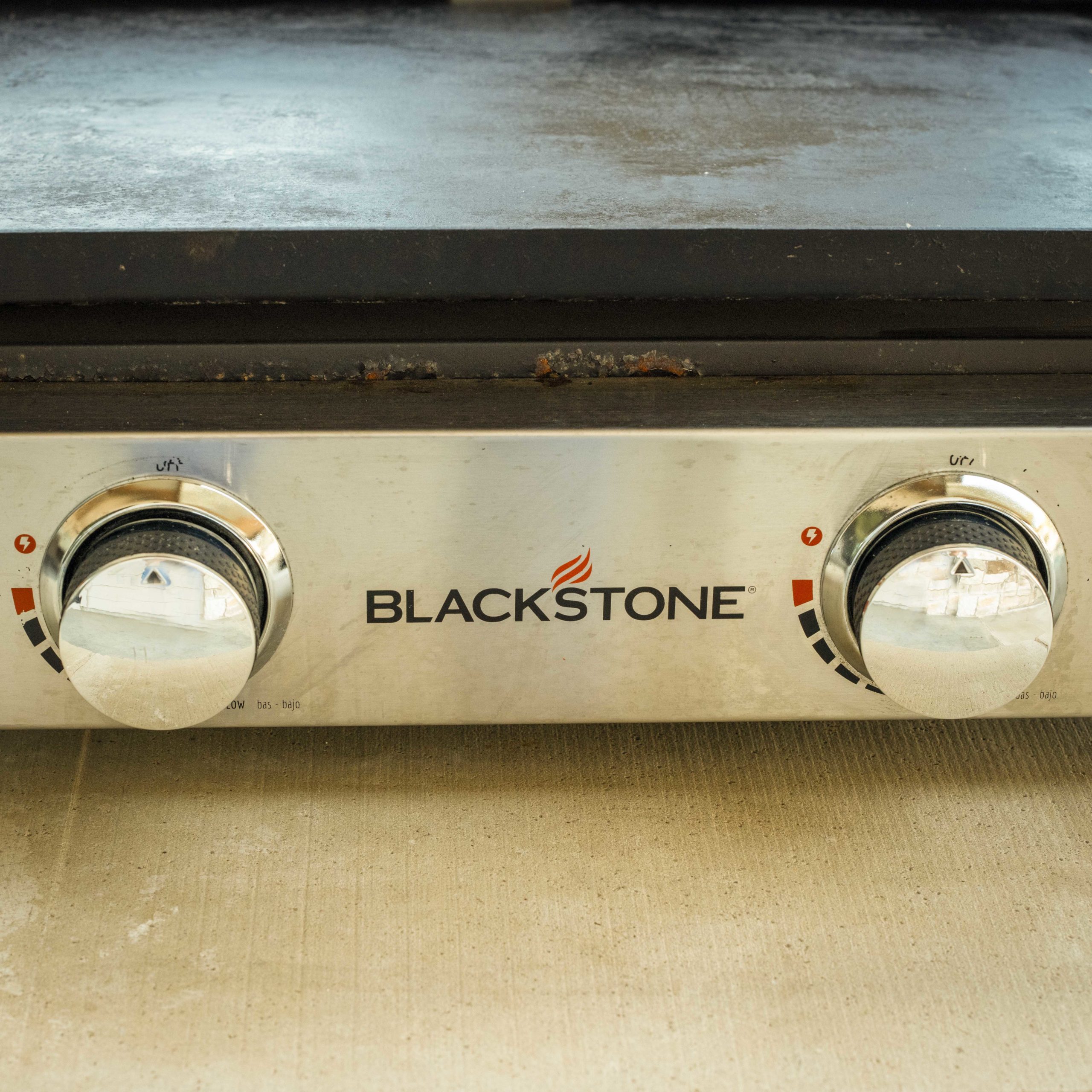
Look at my other guides on FireBoard 2 - A BBQ Grill and Smoker Temperature Controller Review, How Much BBQ to Cook per Person - A Planning Guide and Grind Your Own Meat for the Best Burger.
Jump to:
Cleaning a New Blackstone Griddle
If this is your first time using your new griddle, you'll need to remove any factory coatings and apply a seasoning layer. Follow these easy steps:
- Wash the Griddle Surface - The easiest way to remove any factory oils or residue is with soapy hot water, a soft brush and paper towels. This is likely the only time you will need to use dish soap.
- Rinse with Clean Water - Wipe it down thoroughly with clean water and paper towels or a microfiber cloth.
- Dry Completely - Make sure the surface is completely dry to prevent rust.
- Heat it Up - Turn on the heat and let the surface of the griddle get up to about 300°F. Then turn off the heat. (Always turn off the heat BEFORE adding oil because oil is very flammable.)
- Apply a Thin Coat of Oil - Add a small amount of high smoke point oil like avocado oil, grapeseed oil, or canola oil. Wipe the oil over the entire cooking surface, then use clean paper towels to wipe it all off. This will leave a very thin layer of oil.
- Heat on High - Turn on the heat again and run on high for about 10 minutes to let the oil bond with the metal surface. This will create a durable protective layer.
- Repeat the Process - Apply at least 3-4 layers to create a proper non-stick surface.
Routine Cleaning After Cooking
The best way to maintain your Blackstone griddle is by cleaning it after each use. Follow these simple steps while the griddle is still hot:
- Scrape Off Food Residue - Use a metal spatula, grill scraper or metal scraper to remove food particles from the griddle plate.
- Remove Excess Oil and Grease - Use the scraper to push it into the grease tray.
- Wipe Down with Warm Water - Fill a spray bottle or plastic squirt bottle with warm water. Apply it to the griddle surface and scrub with a paper towel or microfiber cloth.
- Use a Steam Wand with a Scraper and Wire Brush - For really hard to remove, burned on grease and gunk, I prefer to use steam. The steam wand shown below is made by Daimer Industries and it does a great job of cleaning all the griddle crud that is hard to remove.
- Dry the Griddle Plate - Use paper towels to thoroughly dry the griddle.
- Apply a Thin Layer of Oil - Turn off the heat and apply a thin coat of vegetable oil to the entire cooking surface, including the sides. Then use clean paper towels to wipe it all off.
- Heat on High - Turn on the heat again and run on high for about 10 minutes to let the oil bond with the metal surface.
- Store in a Dry Place - Keeping it away from moisture prevents a rusty griddle. I keep my Blackstone griddle in my garage.
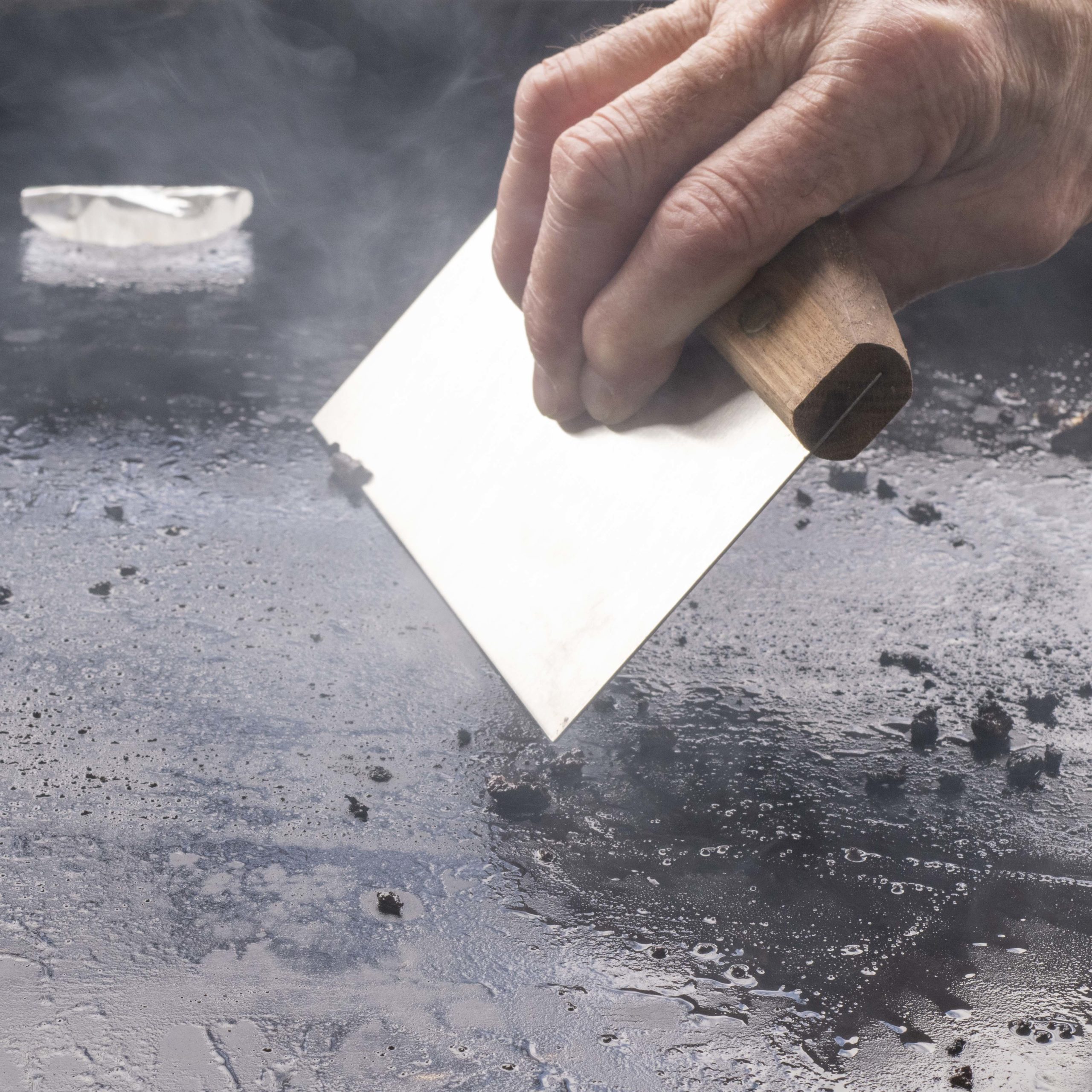
Scrape the griddle with a bench scraper to remove burned on food and excess grease.
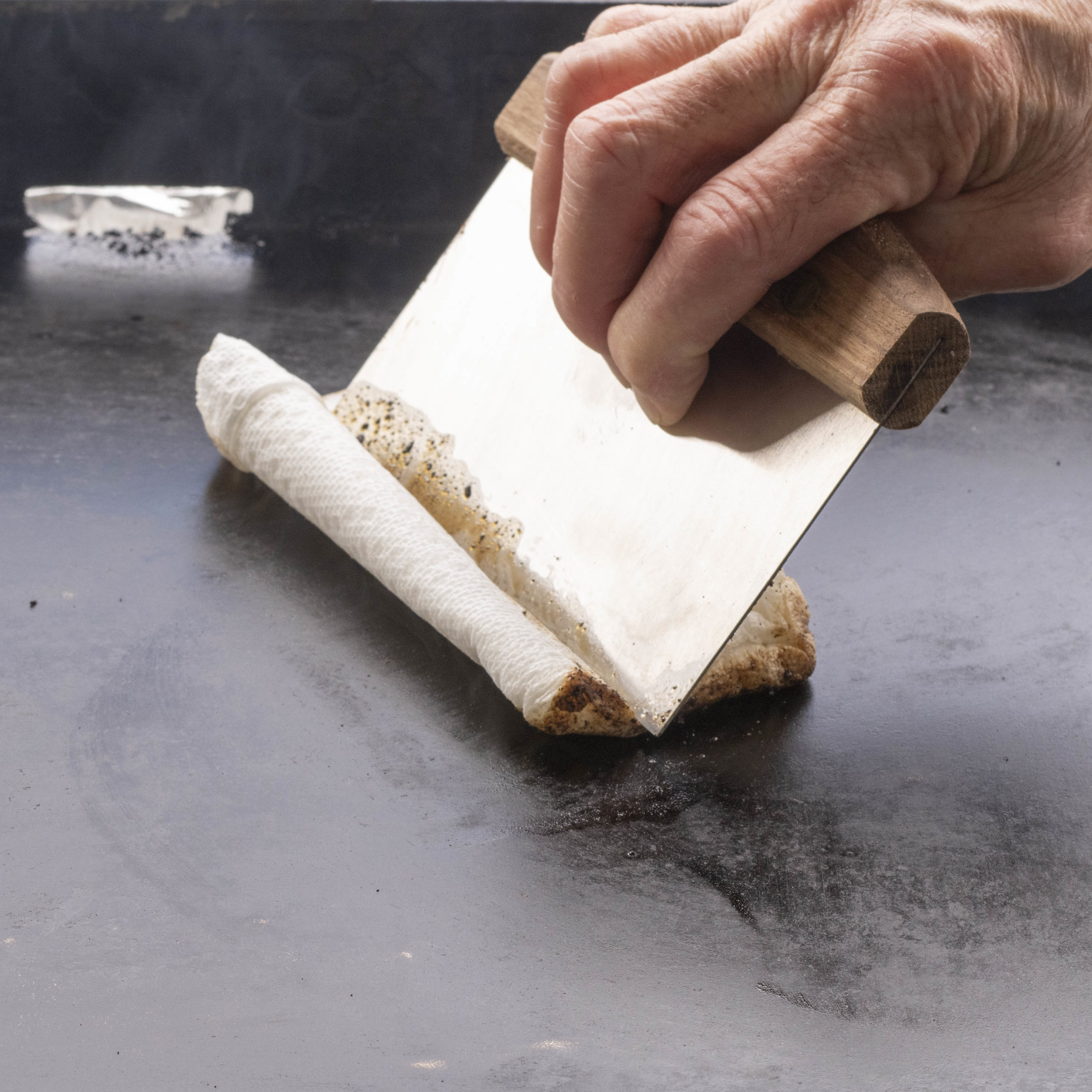
Wipe down the griddle with wet paper towels. Use the bench scraper for leverage.
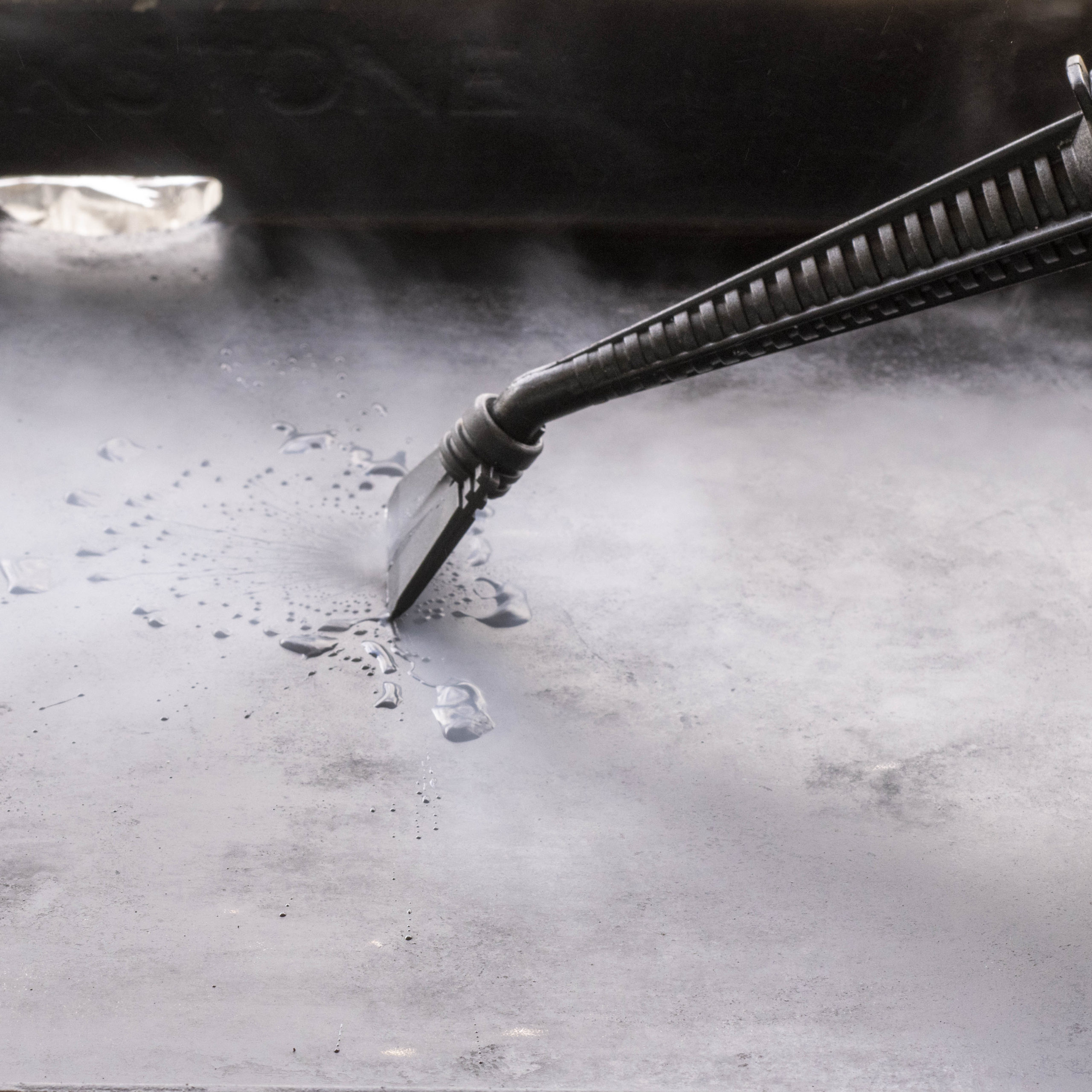
Steam wand with scraper.
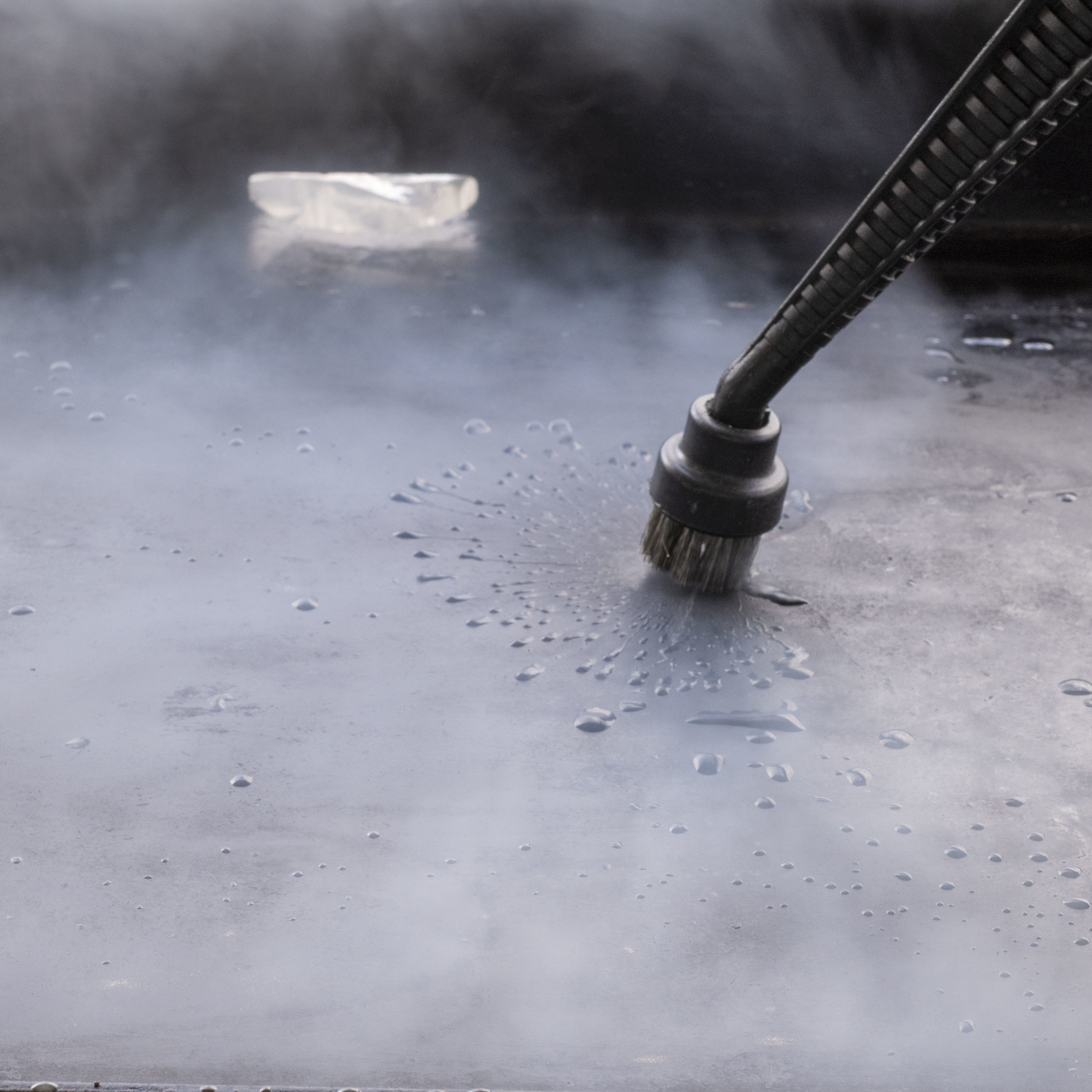
Steam wand with a wire brush.,
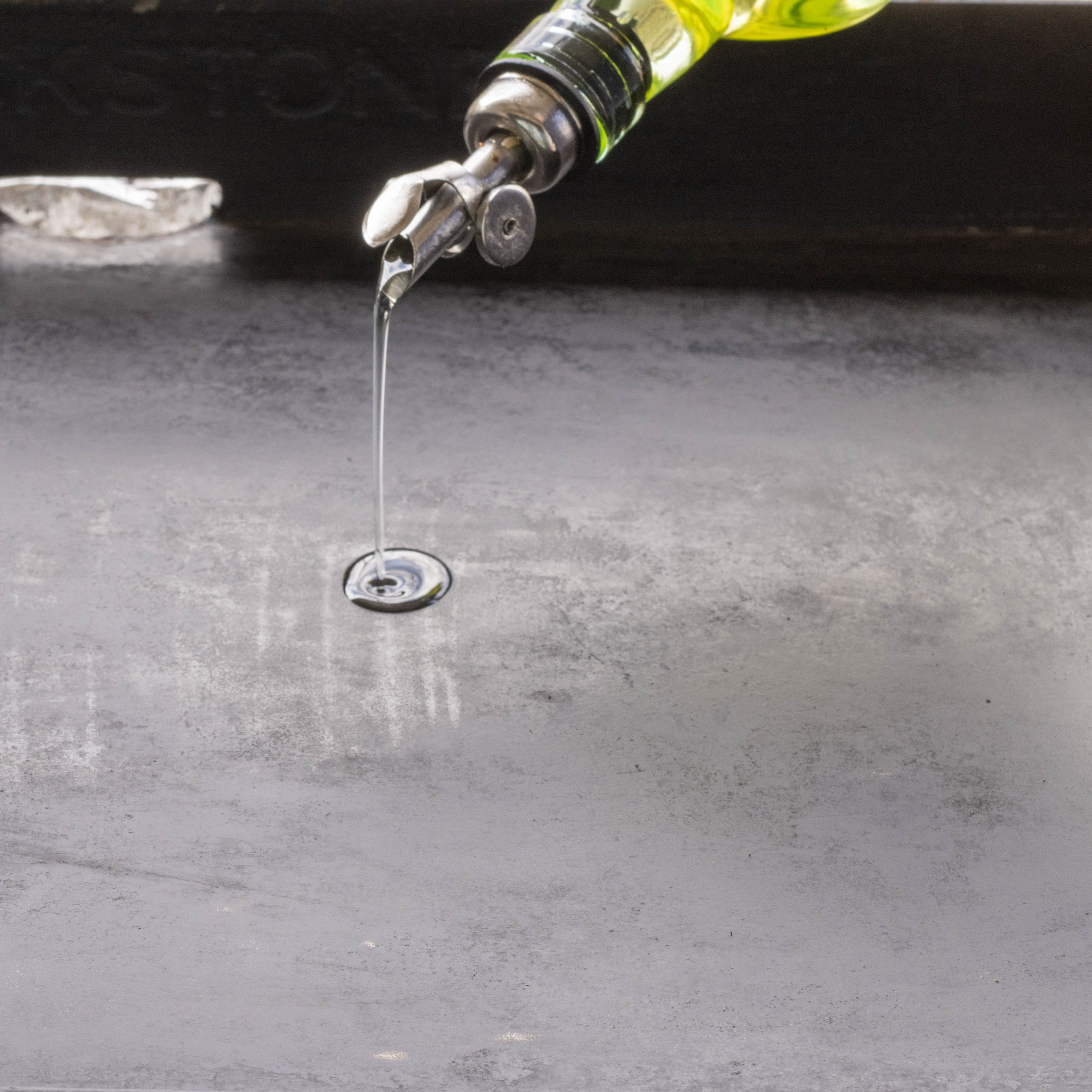
Add a small amount of oil to the griddle.
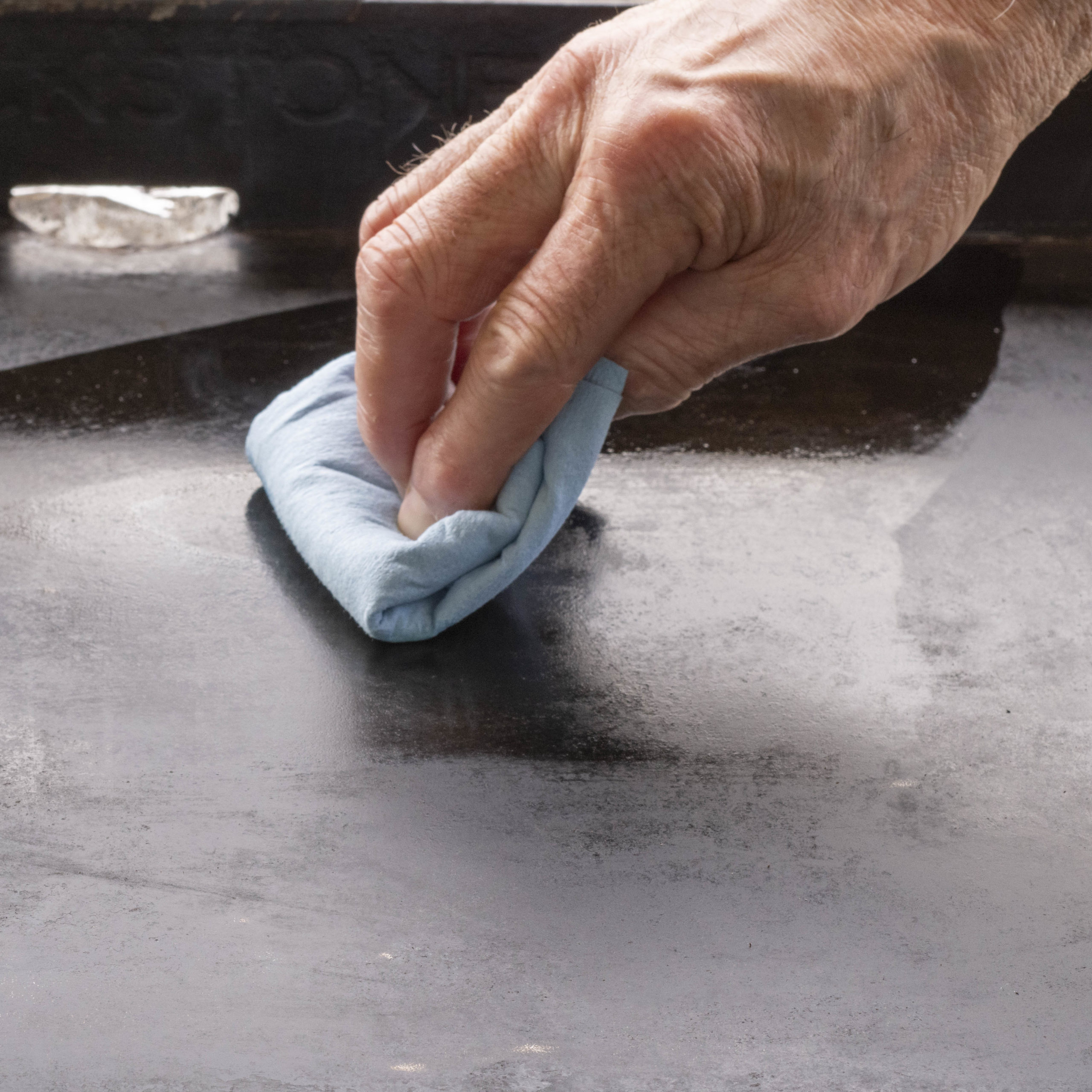
Wipe off the oil with a clean paper towel. Blue paper towels don't leave as much lint behind as regular paper towels.
Deep Cleaning a Blackstone Griddle
If your Blackstone griddle develops rust, it's time for a deep cleaning. Here are the steps:
- Heat the Griddle - Turn on the griddle to high heat to loosen grease build-up and food bits.
- Scrape Off Any Food Residue - Use a metal spatula, grill scraper or bench scraper to remove food debris.
- Use a Pumice Stone (a.k.a. grill brick or grill stone) - Turn off the heat. Add ¼ cup of cooking oil to the entire surface of the griddle and gently scrub it with a pumice grill stone. This tool should really be used only on griddles that are in bad shape, like those with a lot of rust. It will basically resurface the griddle plate.
- Rinse with Clean Water - Wipe down with warm water and paper towels or a microfiber cloth.
- Dry it Thoroughly - Use paper towels to dry the griddle plate.
- Re-Season the Griddle - Apply a thin layer of oil over the entire surface of the griddle, including the side walls, inside and out. Make sure to wipe off as much as possible.
- Heat on High - Turn on the heat and run on high for about 10 minutes to let the oil bond with the metal surface.
- Repeat the Process - Apply at least 3-4 layers to make a non-stick surface. (You just removed it with the pumice stone.)
- Store in a Dry Place - Store your clean griddle in a dry location to prevent rust.
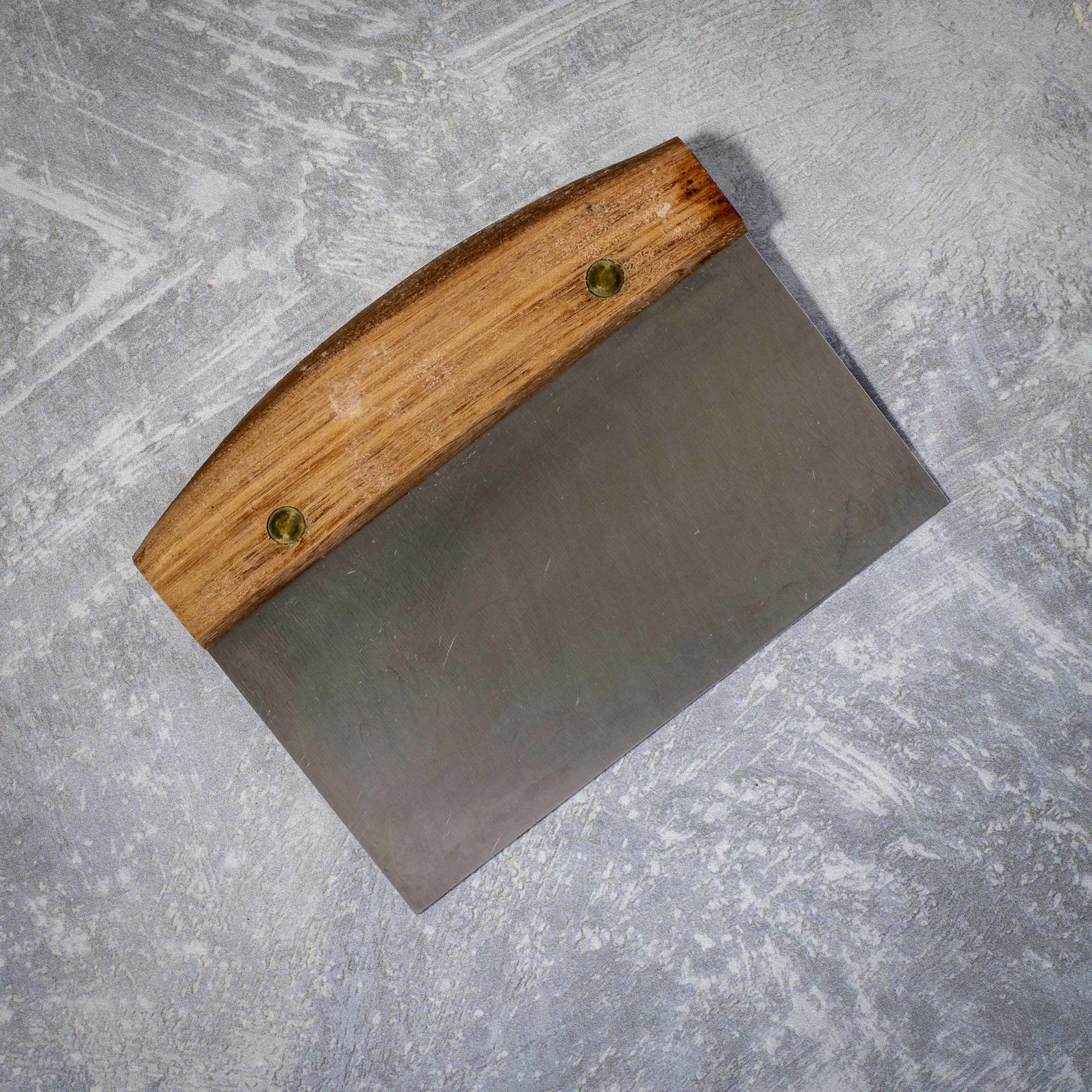
A bench scraper with a stiff blade works great to remove burned on bits of food.
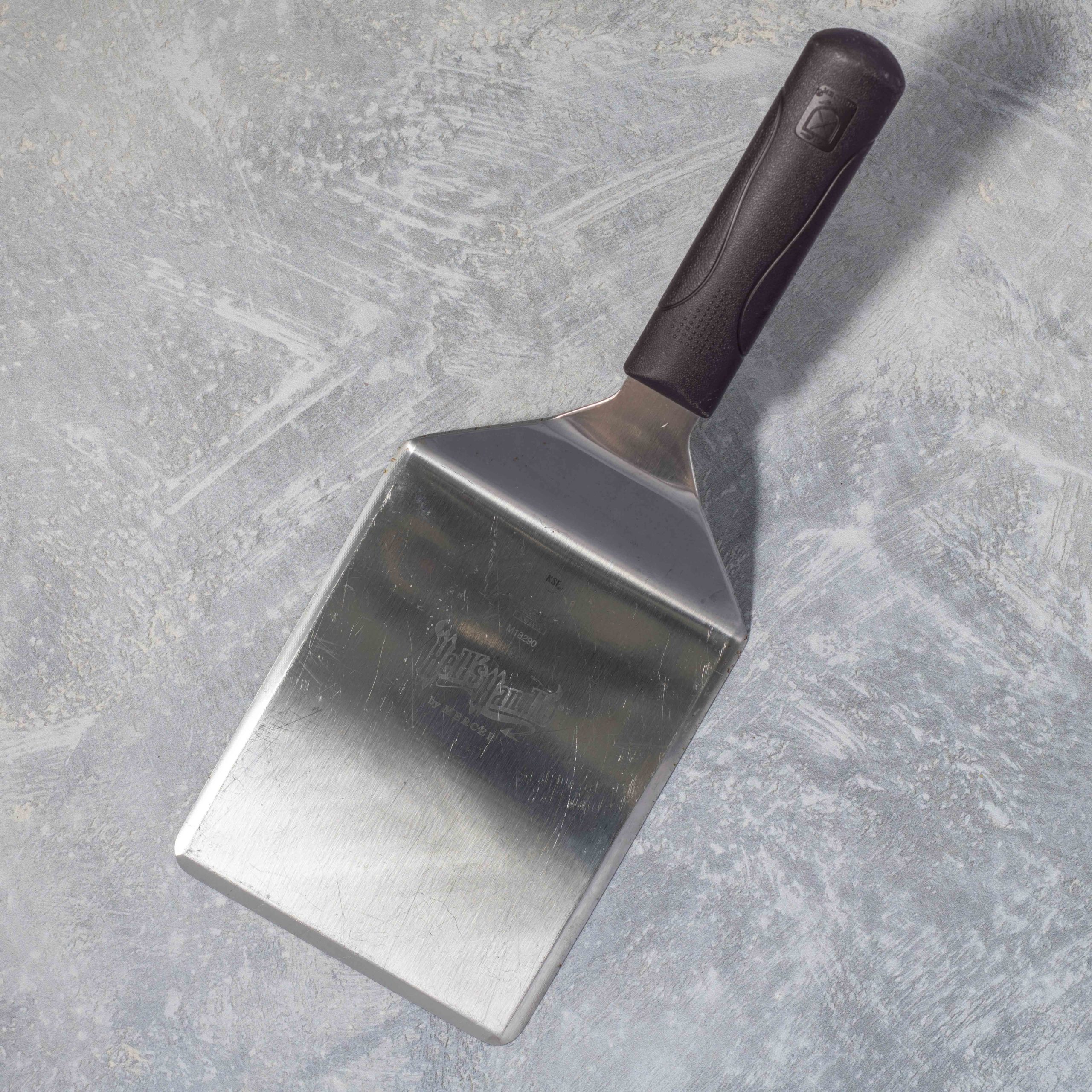
A heavy-duty spatula also works well.
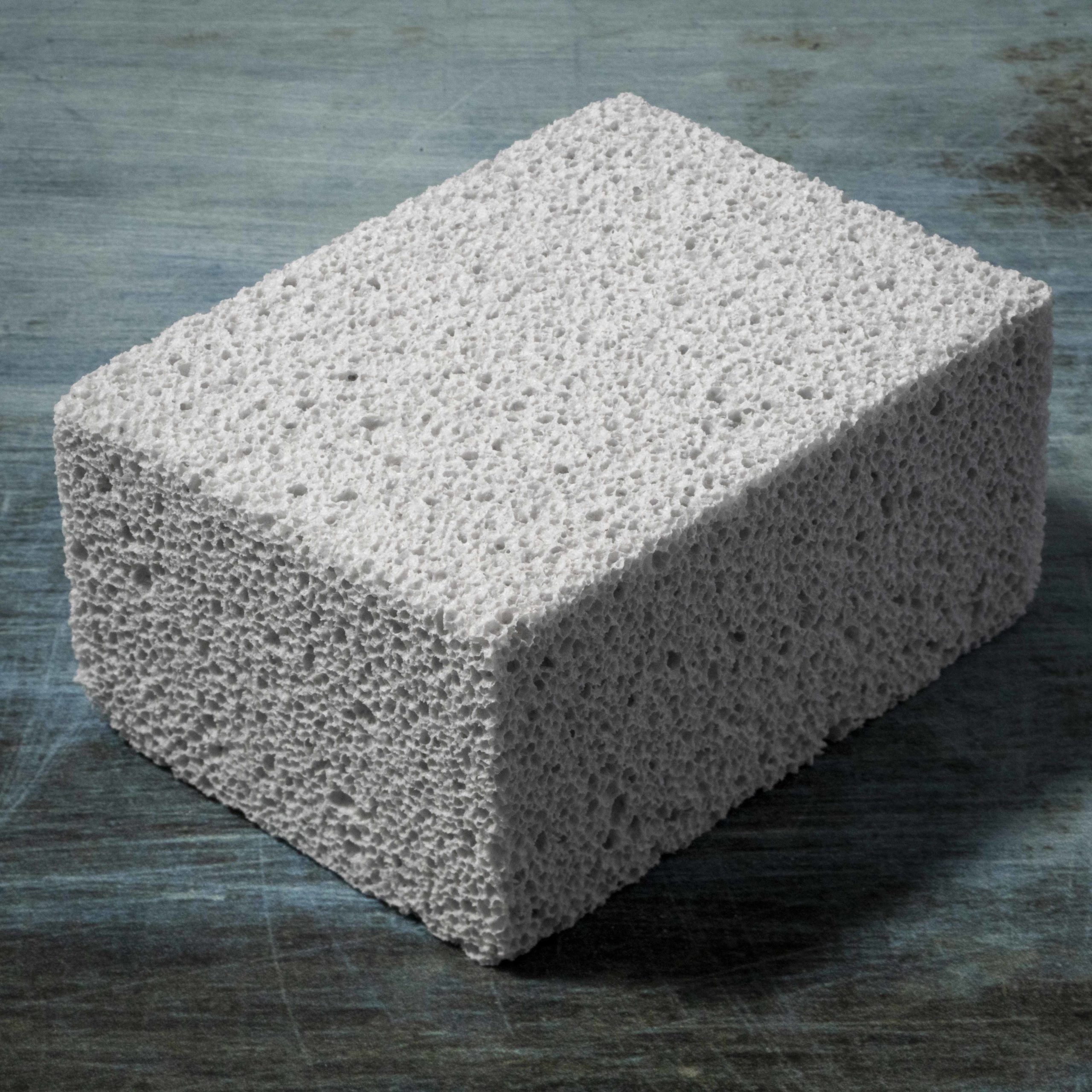
A pumice stone will remove rust.
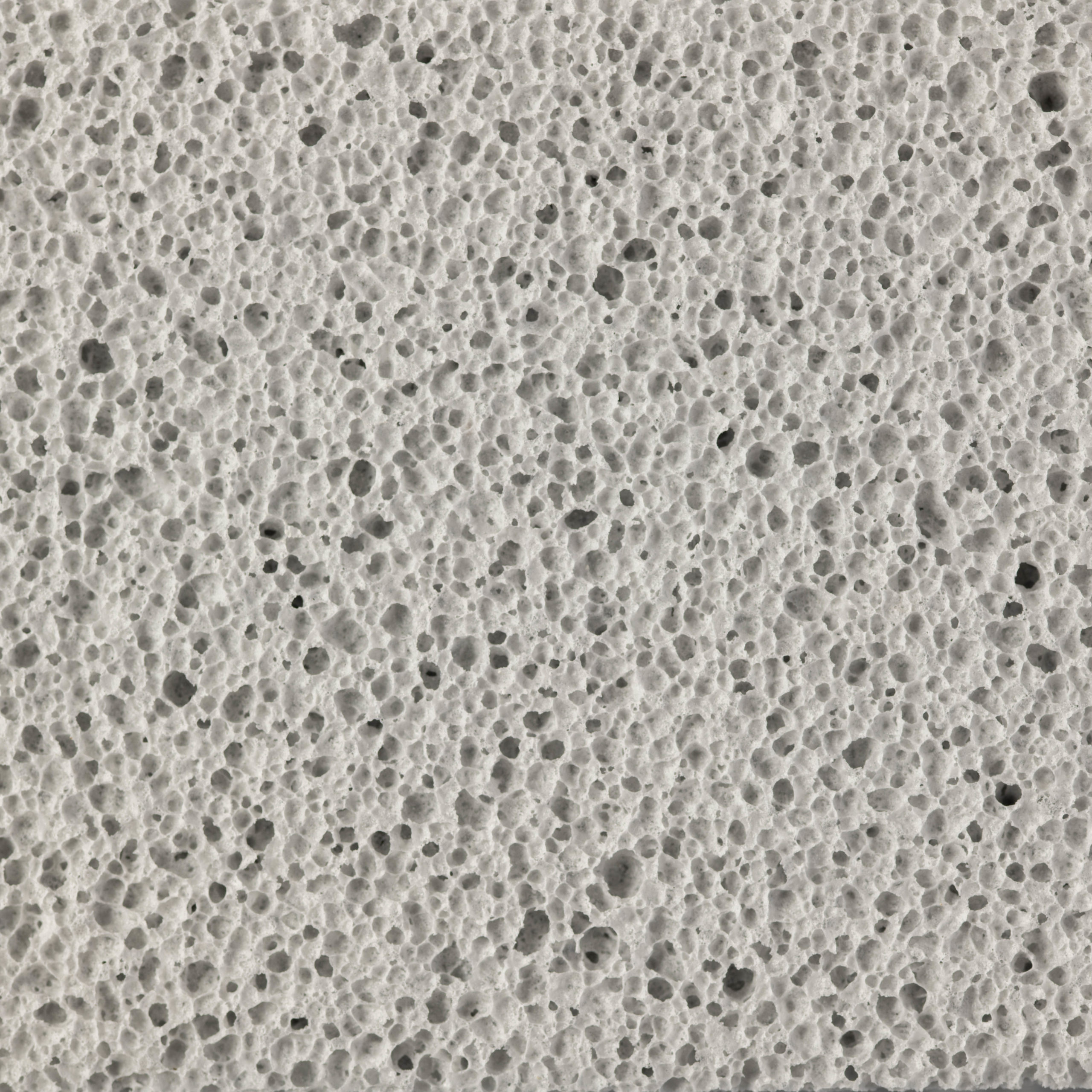
Use gloves when working with a pumice stone. They are hard on hands.
What NOT to Do
To keep your Blackstone griddle in optimal condition, avoid these common mistakes:
- Don't Leave Water on the Griddle Top - Using too much water will absolutely lead to rust.
- Don't Use a Scrub Pad, Scouring Pad or Steel Wool - These will scratch the surface of the griddle and lead to food sticking.
- Don't Use Dish Soap Regularly - It can strip the seasoning layer. If the griddle is really greasy, it's OK to use warm soapy water with a small amount of dish soap and a soft scrub brush to get it off.
- Don't Leave Excess Oil on the Griddle Surface - Excess oil can pool and burn on the griddle plate the next time you use it. Oil can also turn rancid. After applying oil, use a clean paper towel or microfiber cloth to wipe it off.
- Don't Use Lemon Juice - The last thing you want to do is use lemon juice. The acidity will remove the griddle's seasoning.
- Don't Use Cleanser - This will also damage the griddle's seasoning.
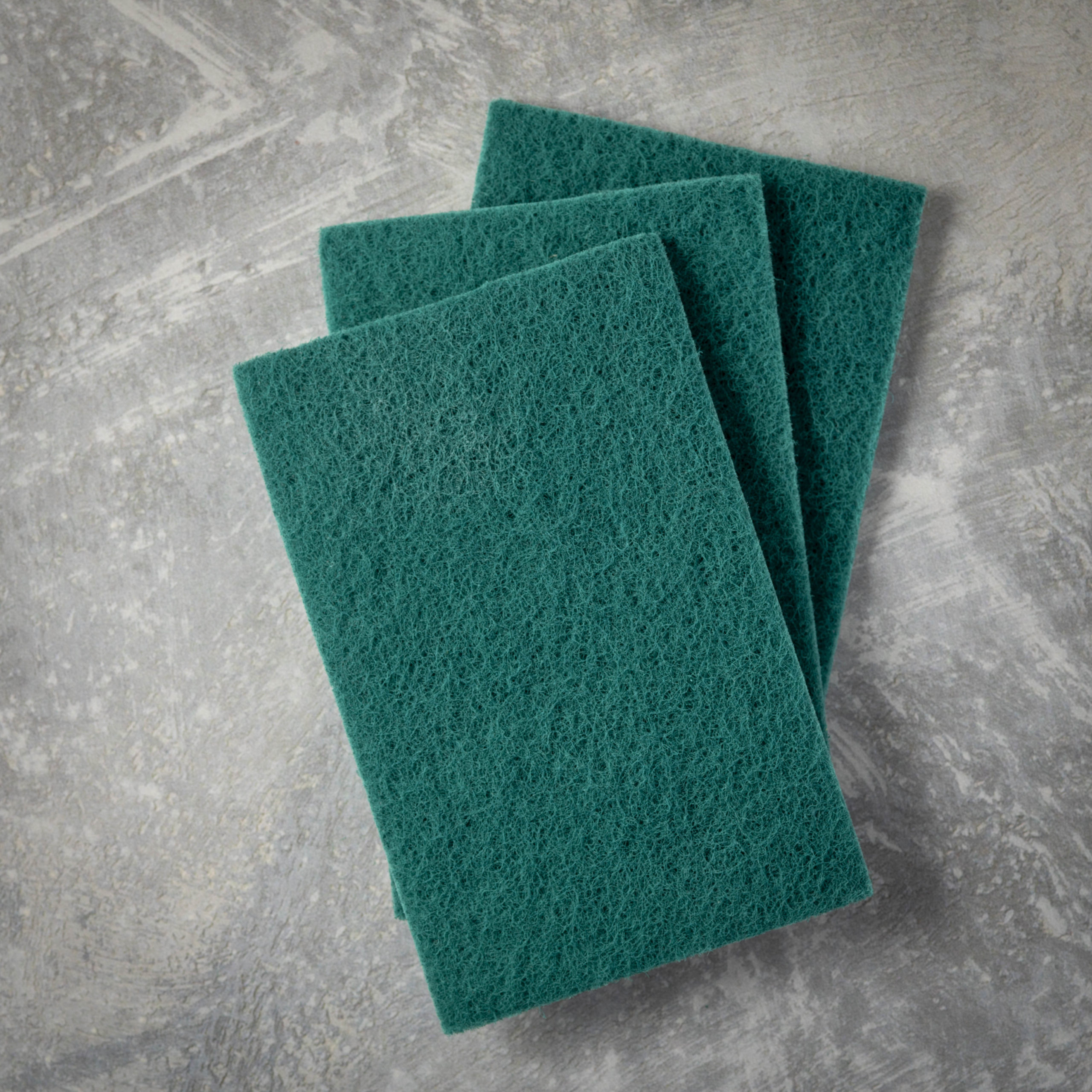
Scour pads will remove the seasoning on the griddle surface.
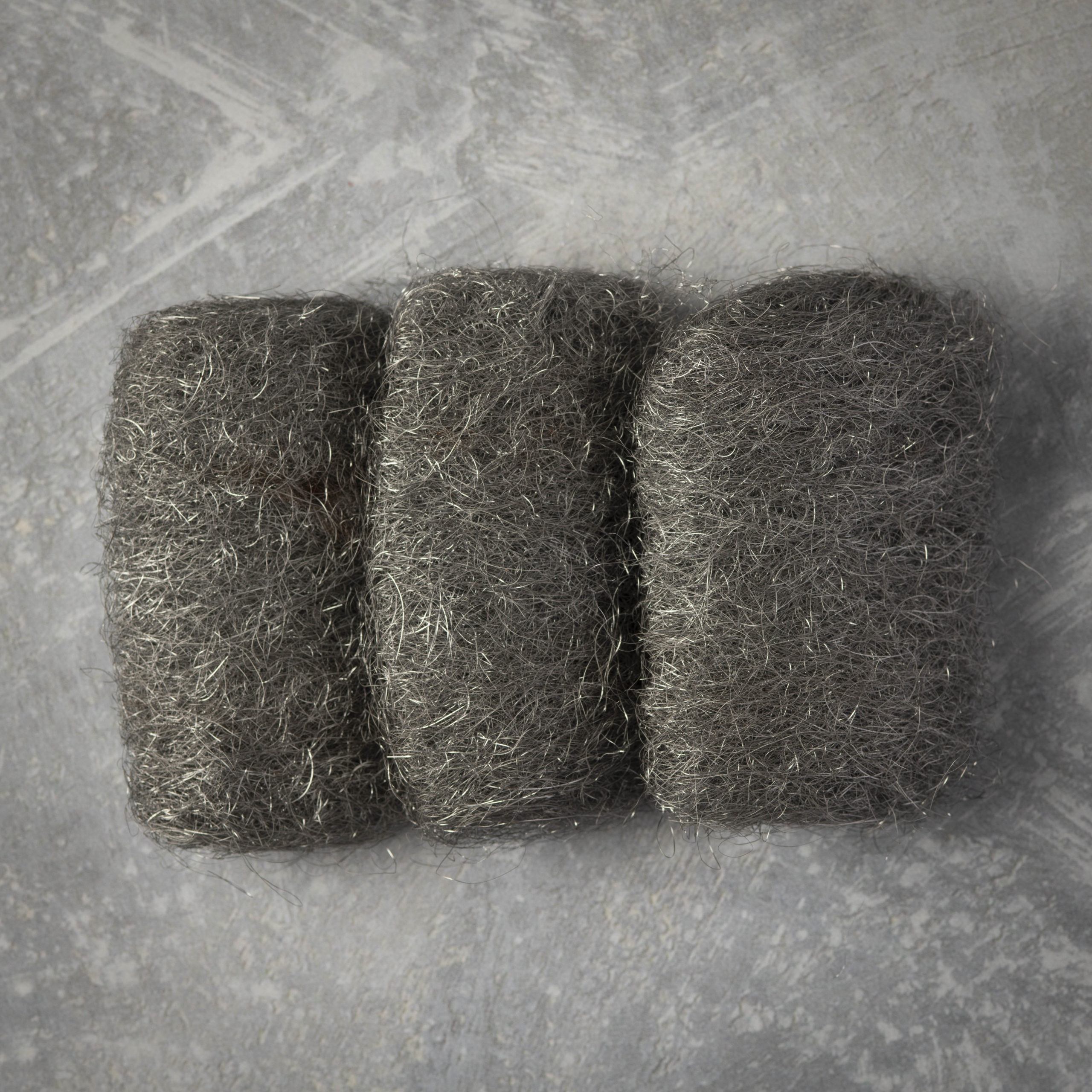
Steel wool is just as bad for the seasoning.
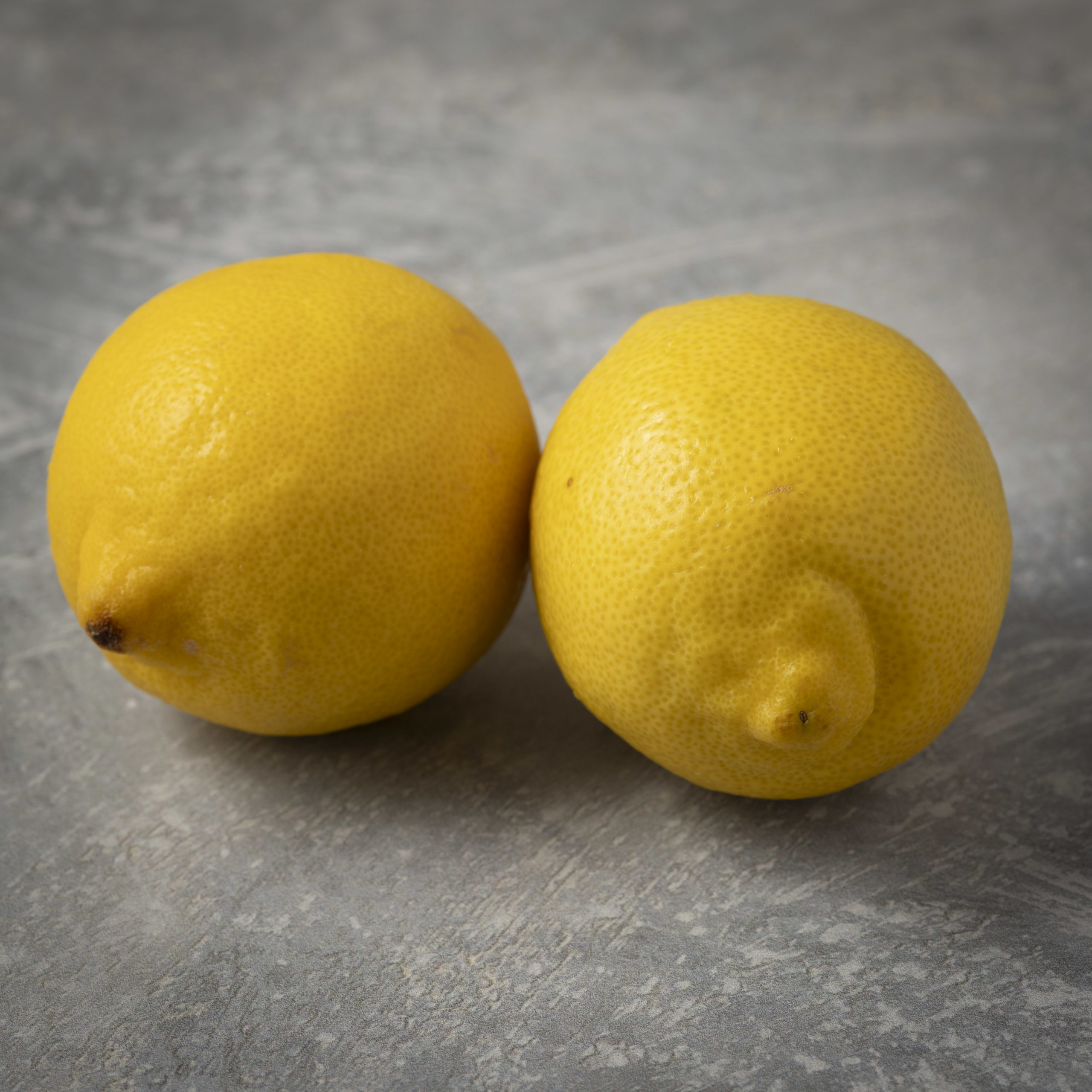
Lemon juice will damage the seasoning.
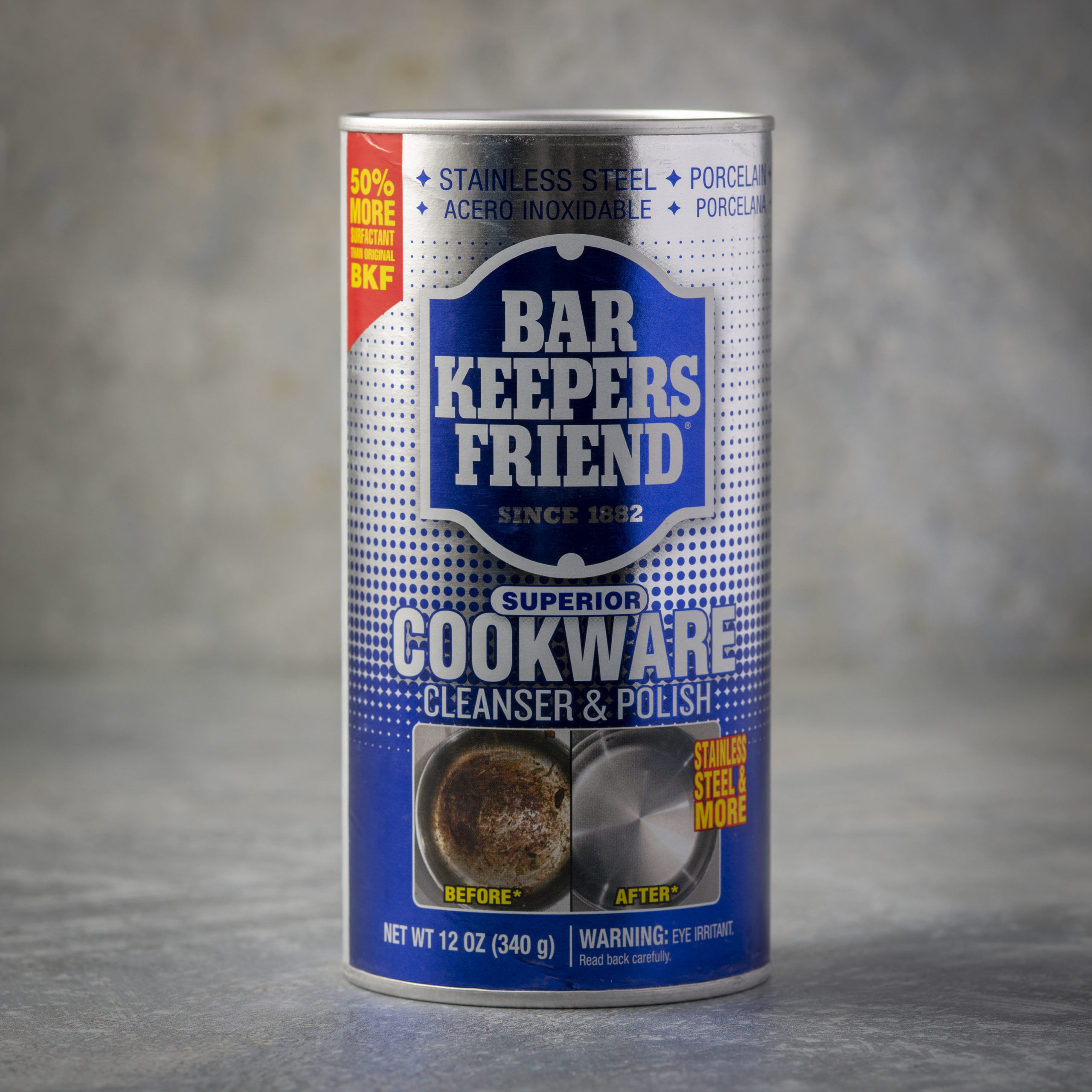
Cleanser is an abrasive that also contains oxalic acid. It works great on stainless steel pots and pan, but not your griddle.
Best Oils for Seasoning
Applying a cooking oil with a high smoke point oil is the most important part of proper griddle care. While there is no best oil, popular options include:
- Canola Oil - Affordable and effective.
- Grapeseed Oil - More expensive than canola oil, but a little goes a long way.
- Avocado Oil - A popular choice for its durability and it has extremely high smoke point (about 500°F).
- Cast-Iron Seasoning - There are a variety of solid cast-iron seasoning products available that work well like a Crisbee Stick and Smithey Ironware Seasoning Oil.
Top Tip
Always wipe a thin coat of oil over the entire surface of the griddle including the side walls, inside and out. Then, wipe off as much as possible with a dry paper towel to prevent pooling.
Final Thoughts
Taking care of your griddle doesn't take much time and ensures a long-lasting non-stick surface. With the right tools and proper seasoning, your Blackstone griddle will perform at its best.
Related
Looking for more information? Check out these guides:
- FireBoard 2 - A BBQ Grill and Smoker Temperature Controller
- Grind Your Own Meat for the Best Burger
- The Best Way to Cook a Perfect Steak Without a Grill
- How to Make the Best Smoked Sausage in a Smoker
- How to Cut a Steak Against the Grain the Right Way
- How to Smoke a Beef Brisket on a Charcoal Grill
- The Best Cuts of Steak to Cook in a Cast-Iron Skillet
- Ten Common Mistakes to Avoid When Cooking Hamburgers

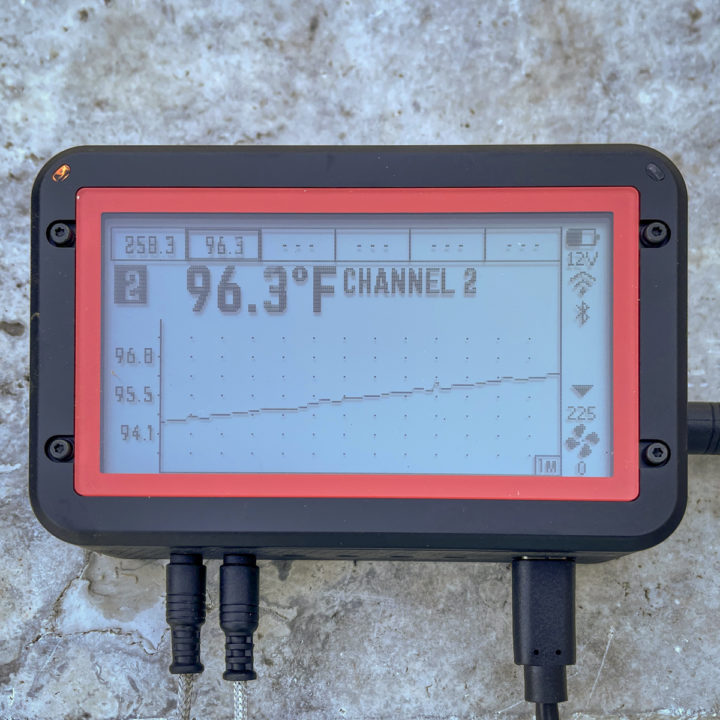
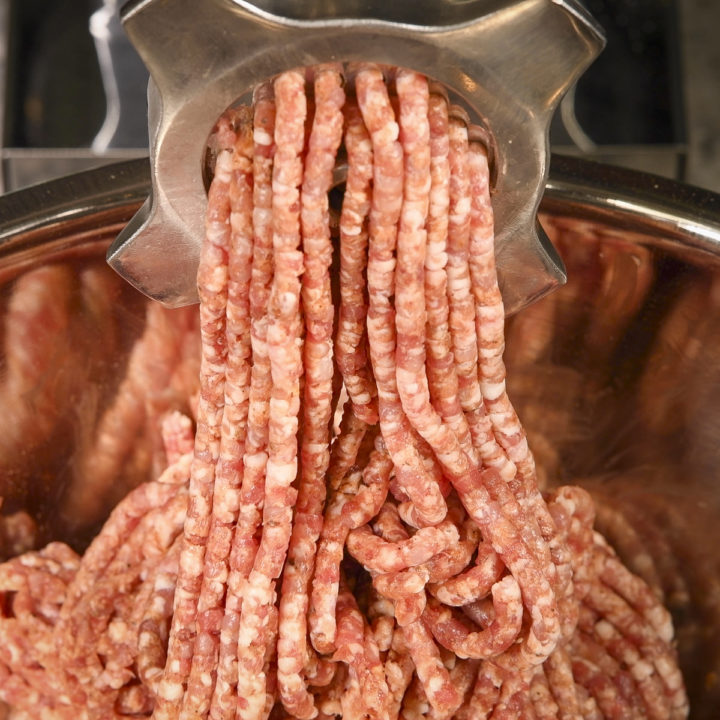
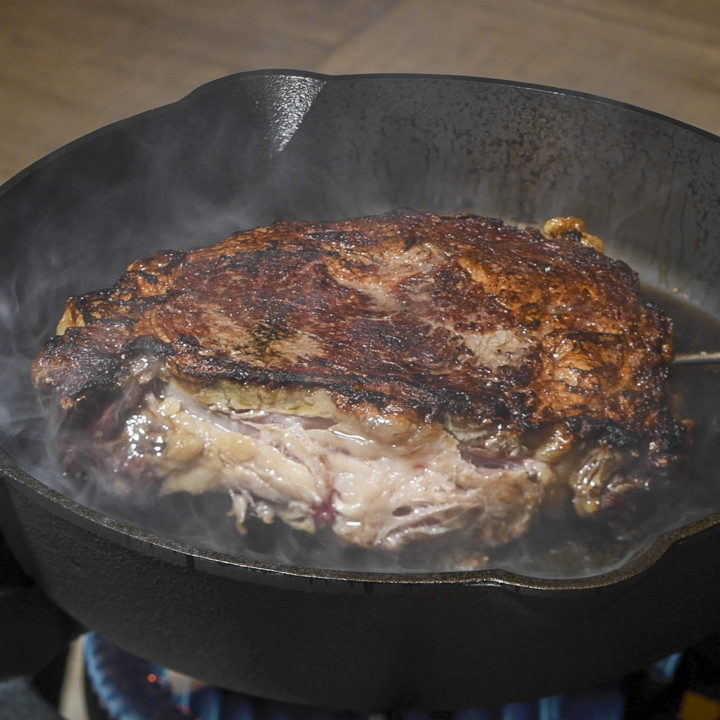
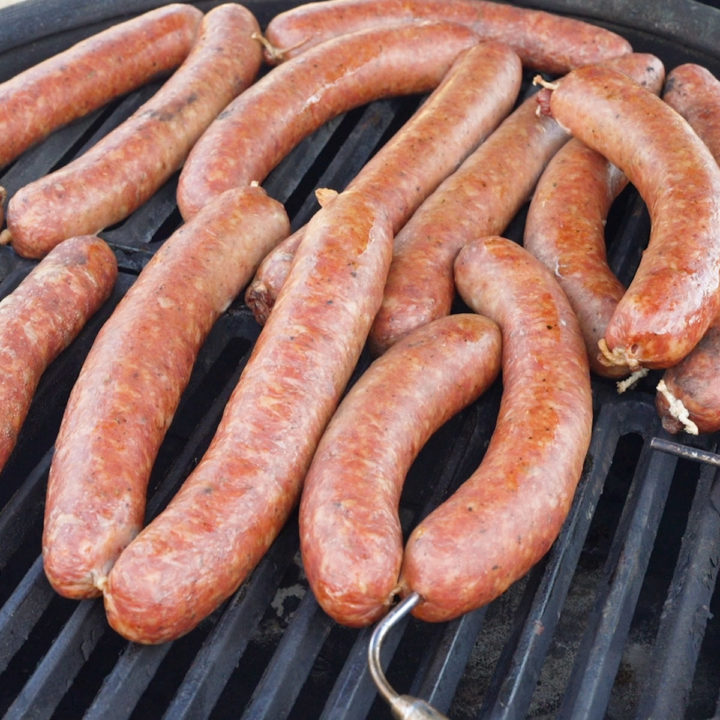
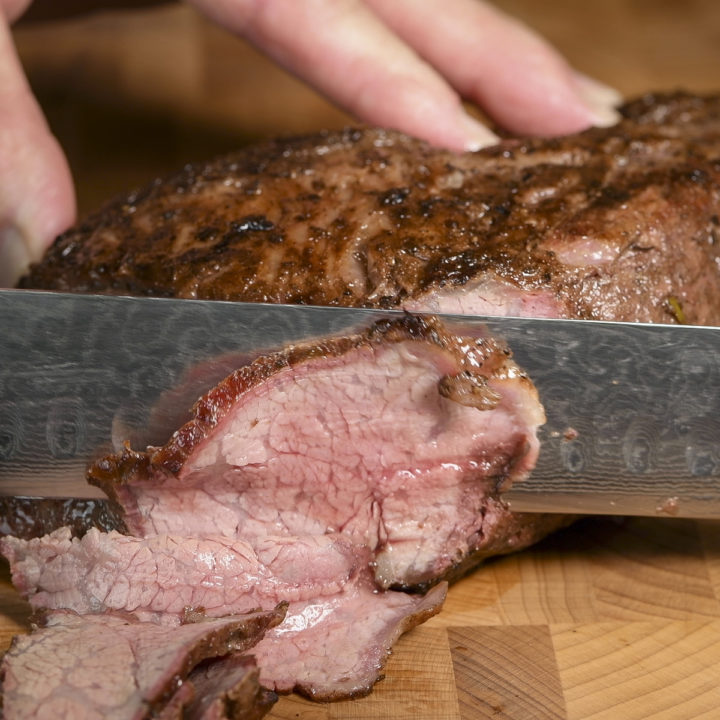
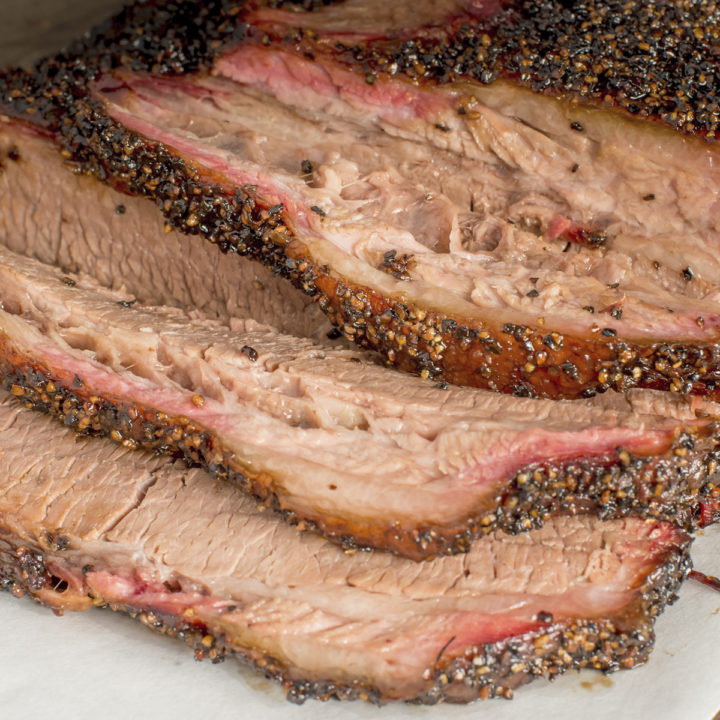
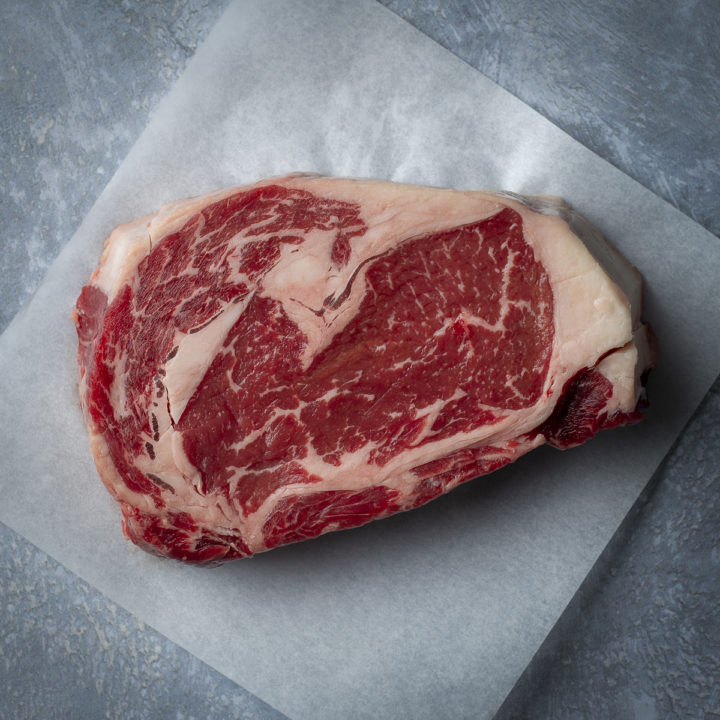
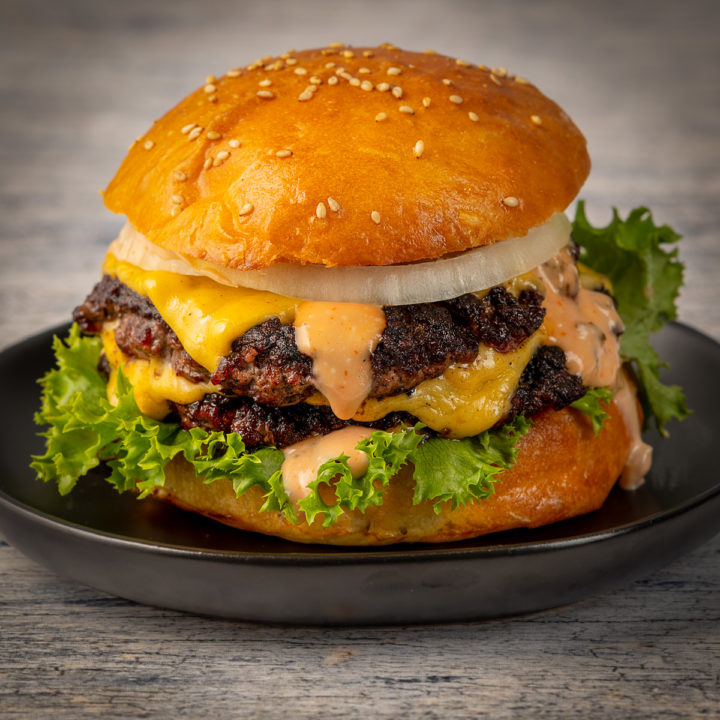
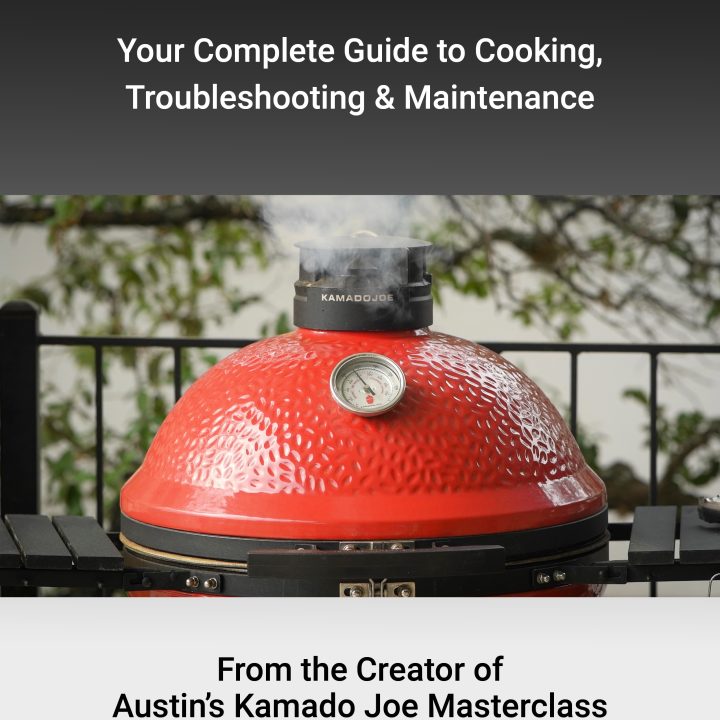

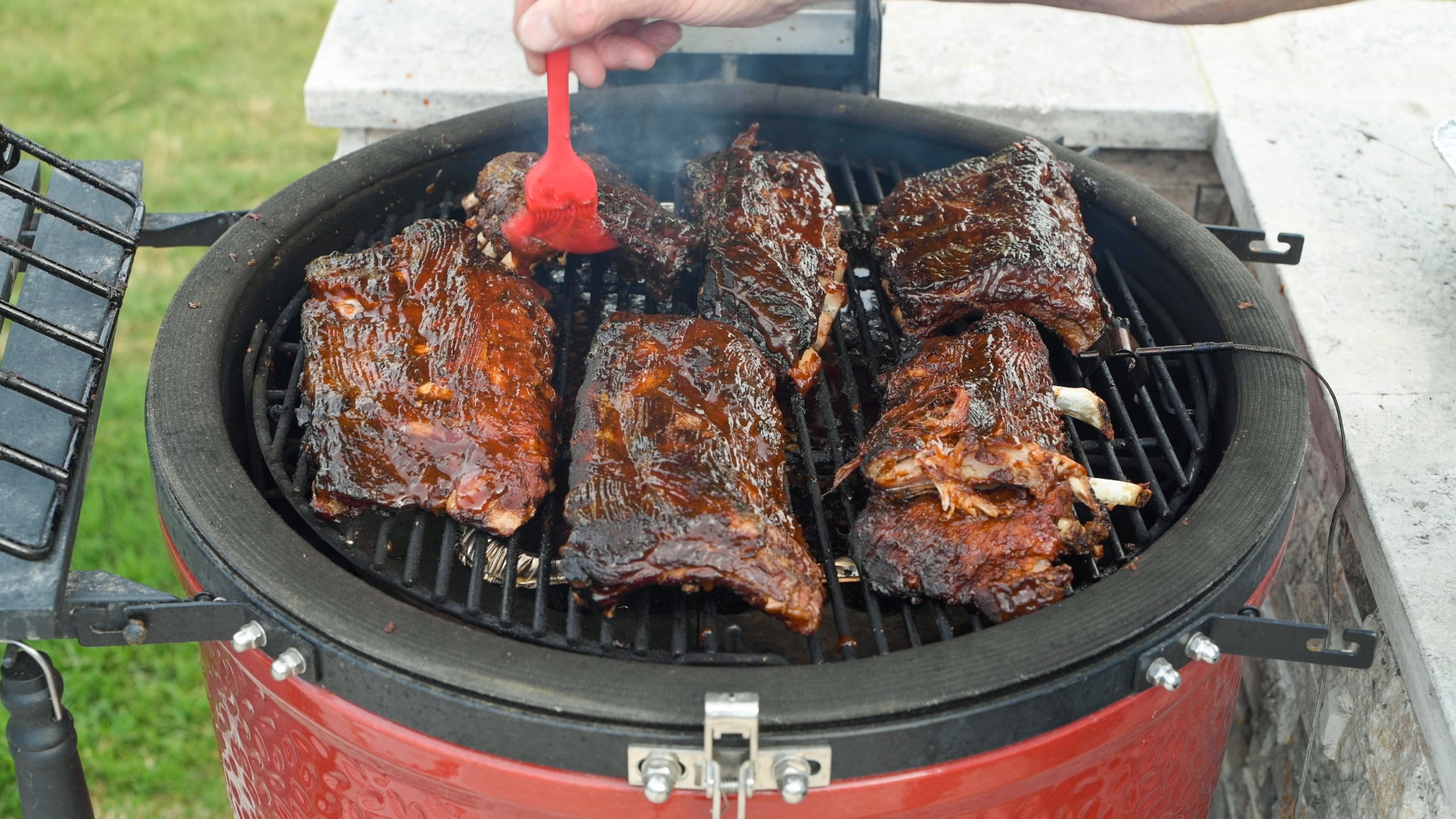
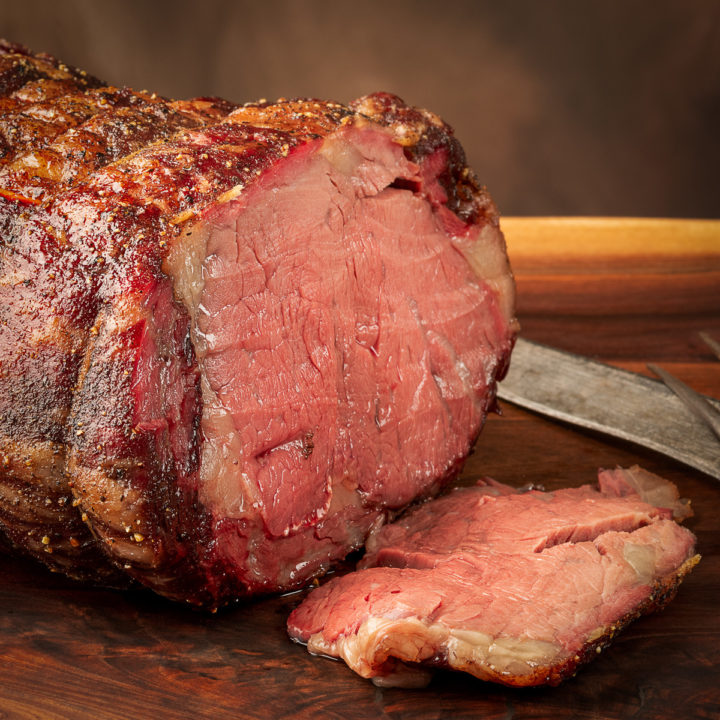
Leave a Reply